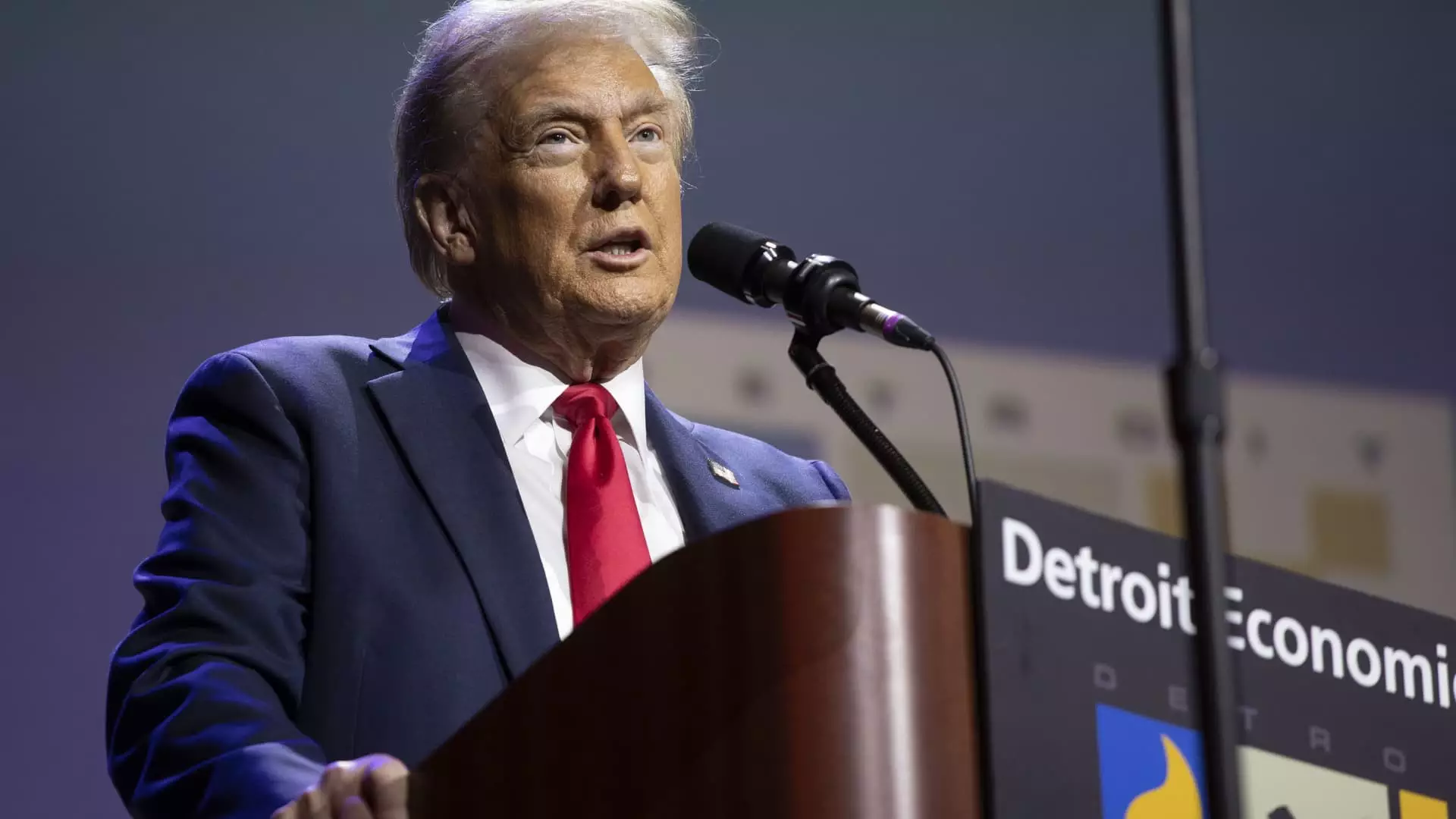The economic landscape in America is poised for significant alterations if Donald Trump secures a second term as President. Recent communications indicate that Robert Lighthizer, Trump’s former U.S. Trade Representative and longstanding trade advisor, is subtly preparing Wall Street investors for a renewed focus on tariffs. According to analysts from Piper Sandler, Lighthizer has been in conversations with investment groups about the implementation of steep tariffs, including a staggering 60% on Chinese goods. With these conversations unfolding, a profound examination is warranted regarding the potential ramifications of Trump’s tariff proposals and their strategic significance.
The Implications of Swift Tariff Implementation
Lighthizer’s meetings with financial executives hint at a quickly actionable economic agenda, reflective of Trump’s previous term. The prospect of substantial tariffs being instituted early into a potential new presidency raises numerous concerns among economists. Critics have warned that such sweeping measures could lead to inflated prices for American consumers, a dip in the country’s gross domestic product, and detrimental effects on employment, particularly in pivotal sectors reliant on foreign trade.
Lighthizer’s influence in Trump’s economic decisions cannot be overstated. He is not only a key figure from the past administration but is also strategically positioned within Trump’s current campaign and potential future Cabinet. Should these tariff plans come to fruition, the consequences could ripple across multiple layers of the economy, affecting everything from manufacturing to price levels for everyday goods.
In this charged political atmosphere, reactions from opposition figures have intensified. Vice Presidential nominee Kamala Harris has pointedly criticized Trump’s tariff strategies as a detrimental economic burden, suggesting the potential for a tax increase that could reach approximately $4,000 for the average American family. The Trump campaign, however, rejects these claims, arguing that Trump’s broader economic vision encompasses substantial deregulation, increased domestic oil production, and a tough stance on immigration—all aimed at job creation and wage growth.
Amid these discussions, various Republican strategists have attempted to shift the conversation back to Democrats, accusing them of inaction with existing tariffs, insisting that Trump’s plans are framed within a larger context aimed at revitalizing the American economy.
The Mechanics of Tariff Policy: A Dual Strategy
What underpins Trump’s potential tariff strategy is a calculated approach that involves both broad strokes and targeted measures. Analysts at Piper Sandler have articulated expectations that Trump’s tariff strategy could operate with greater speed than in his first term. They postulate that the former president’s commitment to imposing both large-scale tariffs and more focused regional tariffs stems from his understanding of how to leverage trade negotiations effectively.
The notion that Trump could invoke these tariffs, even amid potential legal challenges, speaks to a broader theme of using economic policy as a negotiation tool. By proposing tariffs on specific countries or industries—such as automobiles—Trump may attempt to generate concessions on a variety of unrelated political matters. This tactic of “flooding the zone” with tariffs indicates a strategic blend of economic force and diplomacy.
Trump’s affinity for tariffs is not merely an economic stance; it is part of his identity as a powerful negotiator. He famously brands tariffs as beneficial mechanisms for both economic prosperity and international relations. His rhetoric underscores the belief that tariffs can serve as a line of defense against what he perceives as unfair competition from abroad.
In his statements, Trump draws a stark picture of a future where American manufacturing thrives under protective tariffs, and he claims that substantial tariff revenues could alleviate the need for income taxes or other burdensome policies. Yet, experts from institutions like the Peterson Institute for International Economics have pushed back against such assertions, emphasizing the impracticality of replacing income tax revenues with tariff income while simultaneously warning against the broader economic destabilization that could occur.
As the political landscape continues to evolve, Trump’s possible return to power brings with it the shadow of complex economic strategies. The interplay between Lighthizer’s recent engagements and the anticipated tariff increases reveals a cautious yet aggressive economic manifesto that intends to reshape trade and industry in the United States. However, with critical voices from the economic community cautioning against the potential fallout of such bold moves, the fine balance between policy goals and practical outcomes remains tenuous.
In navigating this uncertain economic terrain, the coming months will be crucial, as both the electorate and the financial markets begin to react to the implications of Trump’s tariff strategies. The stakes are high, not only for the political landscape but also for the wallets of everyday Americans and the broader U.S. economy. The outcome of this political and economic interplay could resonate for years to come, emphasizing the importance of strategic foresight and comprehensive economic planning.


Leave a Reply